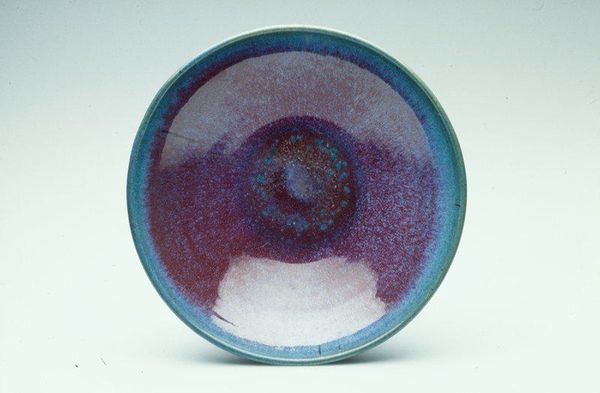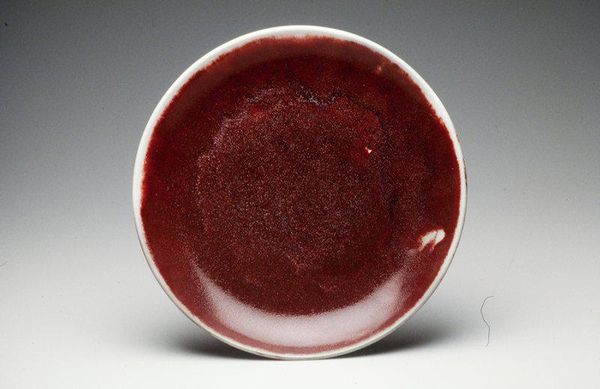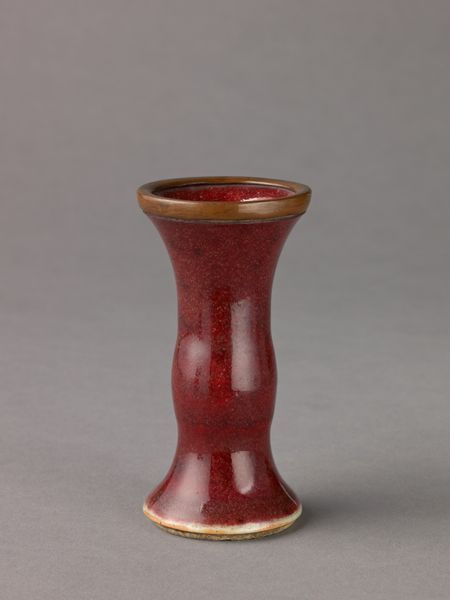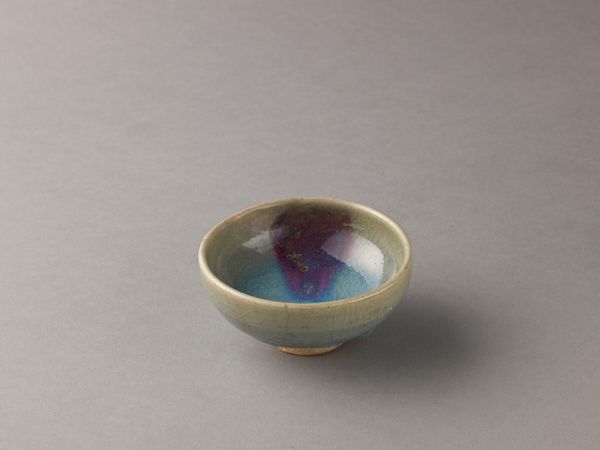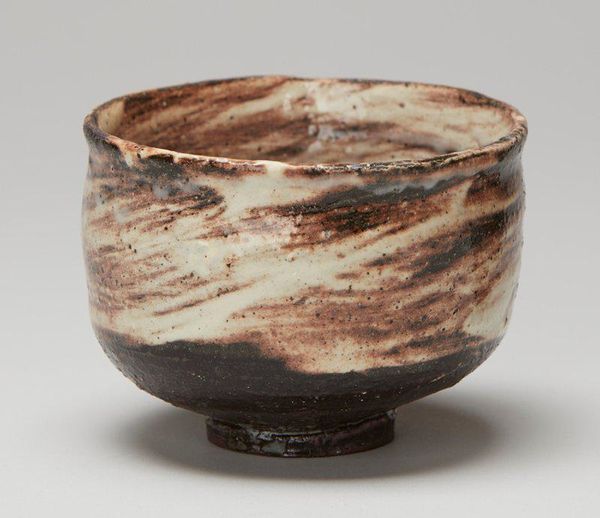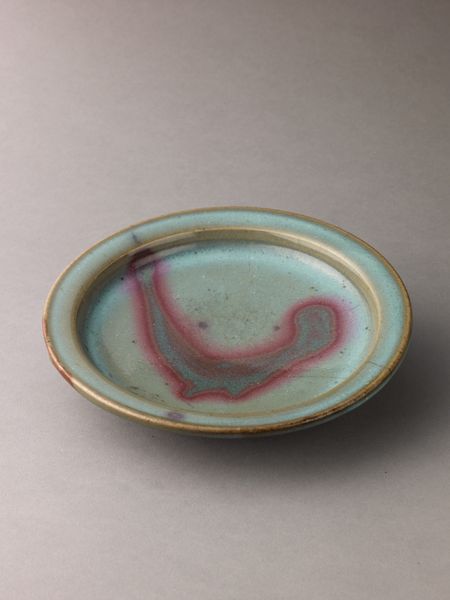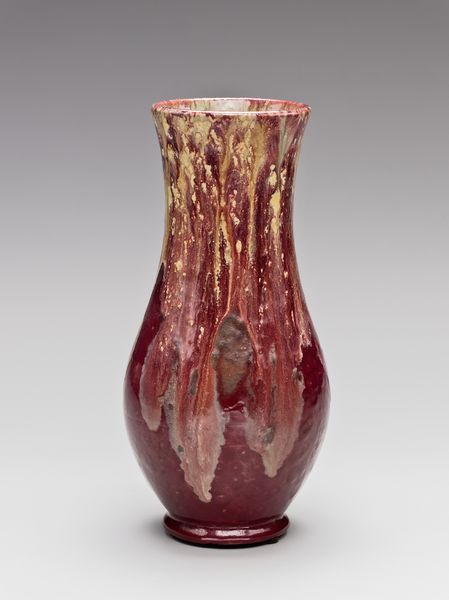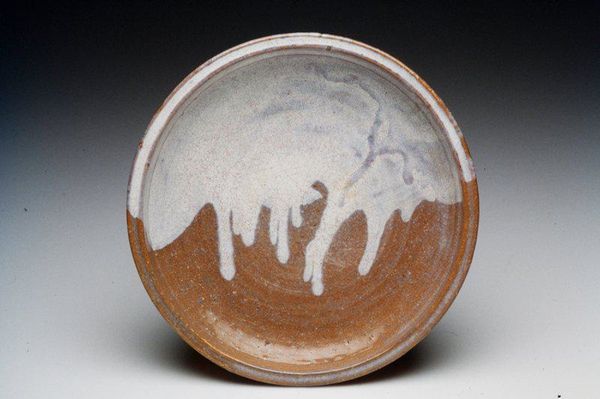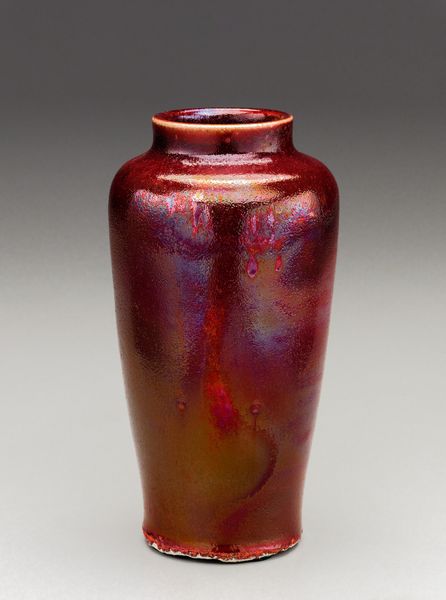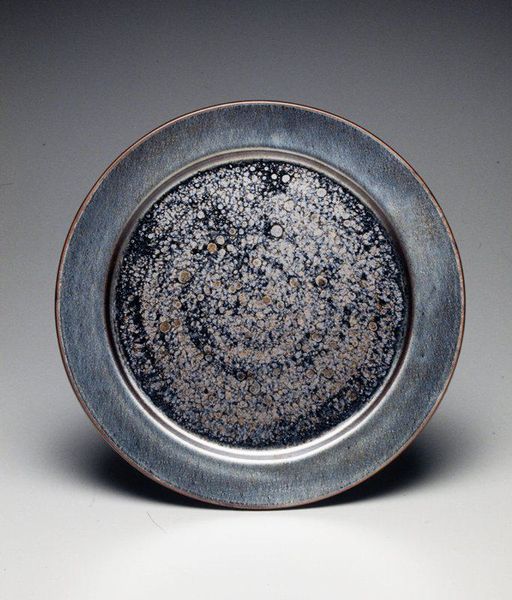
ceramic, earthenware
#
ceramic
#
earthenware
#
stoneware
#
ceramic
#
united-states
#
decorative-art
Dimensions: 2 x 5 1/2 in. (5.08 x 13.97 cm)
Copyright: No Known Copyright
Editor: Here we have a ceramic "Bowl," likely earthenware, created in the 20th century in the United States, currently held at the Minneapolis Institute of Art. The glaze, with its intense crimson and purple hues, is what really grabs me. What do you see in this piece? Curator: I’m drawn to the social implications of an object like this finding its way into a museum setting. Think about the journey, from studio to exhibition. What conversations, what value judgments, happened to elevate it from a functional object to an admired art piece? Who was Kring, and how did his social context inform the artistic choices in crafting the bowl, from its shape to the expressive glaze? Editor: So, its history outside the object itself, is that right? The people, systems, or places that deemed it art? Curator: Precisely. Consider the role of decorative arts within larger power structures. During the 20th century, certain crafts were relegated to a 'lesser' status compared to fine arts like painting or sculpture. Museums often perpetuated that divide. So displaying it in a prominent institution questions these long-standing hierarchical separations and opens possibilities of discussion of aesthetics within society. What’s your sense of why people might have deemed it "museum-worthy"? Editor: I hadn’t really thought about the journey this object had taken to be showcased in this place, like how trends in artistic and design appreciation come and go, right? Thanks, that's given me something new to think about! Curator: Indeed. Context reshapes meaning, both for maker and audience.
Comments
No comments
Be the first to comment and join the conversation on the ultimate creative platform.

